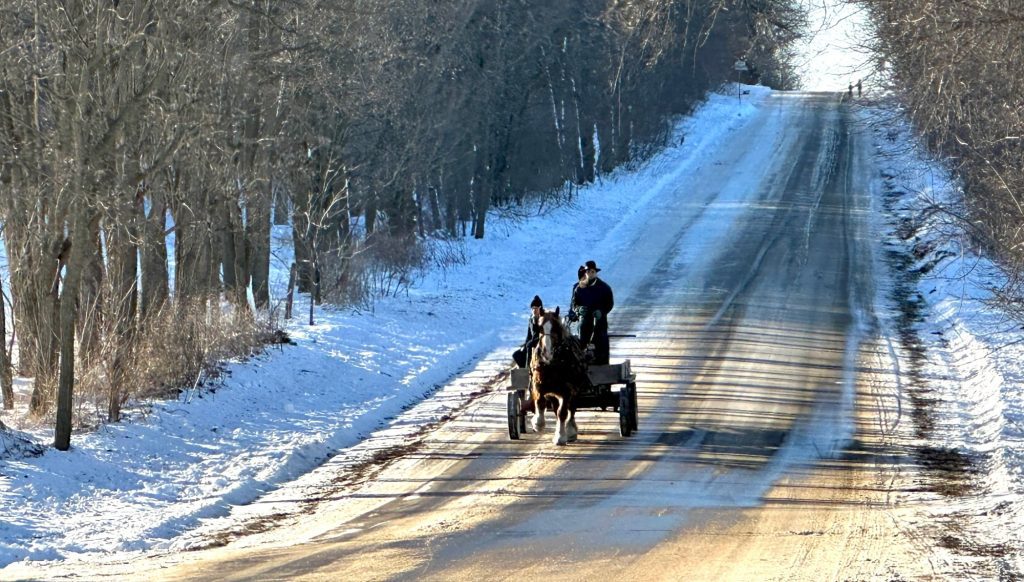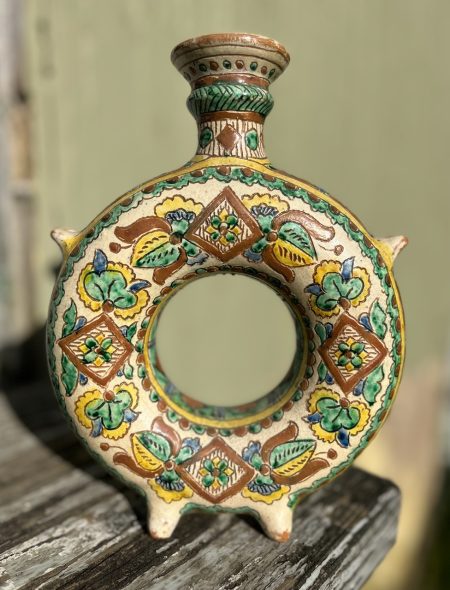When life feels too complex, I can regain a feeling of stability by driving to farmland where Amish families deliberately live quietly, simply and conservatively. Add “mysteriously,” if you’ve had little exposure to their lifestyle.
In their rural scenery are black, horse-drawn carriages instead of trucks and tractors. They are driven by men with straw hats, suspenders and beards. The women wear bonnets and modest, ankle-length dresses.
Roughly 384,300 Amish people live in 32 states and four provinces in North America, reports Elizabethtown College, where Amish studies is a specialty. The college is in Lancaster County, Pennsylvania, home to the nation’s largest Amish population at 44,315.
These Christian families typically live without electricity, motorized vehicles, telephones and other modern conveniences. Contact with outsiders is not a priority; but interactions are not one-dimensional, cookie-cutter experiences either.
Amish encounters, and how hard you have to work to find them, in part depend on location. Communities with a high concentration of Amish families approach tourism with varying degrees of interest, creativity and commercialism. Consider the examples of Wisconsin, Illinois and Indiana.
Wisconsin: search around on your own
My wintry Saturday drive ended 40 miles north of Madison as I cut east toward Dalton, population 203, for a glimpse and taste of Amish life. Thick-legged workhorses hauled ice from a pond. Others clip-clopped more daintily while pulling buggies on snow-packed hills.
Roughly 10% of Wisconsin’s 25,000 Amish residents live between Highways 22 and 73; Barry Road is one popular shopping route.
First stop, farm-based Pleasant View Bakery, south of Barry Road. In the commercial kitchen were pans of just-baked cinnamon rolls. Cherry mash — chocolate under and over a vanilla filling with chopped cherries — roused my curiosity; I bought one-half of the last pound and also left with a cherry pie, pumpkin bars and a dozen cookies.
Next, Mishler’s Country Store, where household provisions arrive in bulk and are packaged into portions suitable for the average family. Sets of wind chimes, made by the Amish in Indiana, tinkled outdoors. Fat heads of cauliflower, blemish-free and 89 cents each, filled a shopping cart indoors.
On a bulletin board were signs and business cards for clock repair, rides, welding, stump removal and more. On shelves were Amish cookbooks, home medicine remedies and seasoning blends that included ones for homemade bacon and bologna.
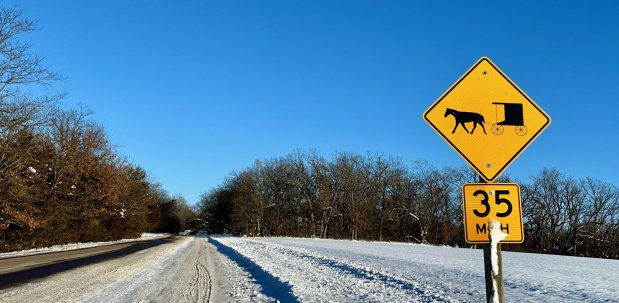
I left with cauliflower, a garlic bulb, bags of tiny bow-tie pasta and chopped pecans. Eggs were not in stock, but the clerk eagerly gave directions to a farm with chickens.
Last stop, Mast’s Bent and Dent, which stocks an unpredictable mix of nonperishable foods that are near, at, or past “best by” dates. Don’t expect signage; I drove past the farm-based business twice before nailing the location.
The search for discounted items from excess and clearance stock was great at this well-organized store. There were vinaigrettes, toothpaste, mouth guards for sleeping, Dolly Parton cake mixes, keto products, and many other items at a deeply reduced price.
During the spring, it would make sense to make a stop or two for bedding plants. There are at least twelve greenhouses in the rural area, and there are also many woodworkers who build kitchen cabinets, furniture, birdhouses, and cutting boards. They may also sell items for Amish craftsmen from other states.
Businesses are listed by address at travelmarquettecounty.com. Or visit the Princeton Amish Country Store to purchase everything from honey to rocking chairs all at once.
This is an easy day trip from Madison, or you can extend the getaway into an overnight stay closer to the Amish community. The lodge at Mecan River Outfittersnear Princeton is a good match for outdoor lovers. For a modern lakeside resort vibe, check out Heidel House in Green Lake.
Another large Amish settlement is located in the southwest, in the beautiful hills and valleys of unglaciated Wisconsin. Particularly charming are 17 miles of County Road D, between Cashton (population 1,108) and La Farge (population 730); signs in driveways indicate businesses run by farm families.
Kathy Kuderer describes the people in the area as “Old Order Amish”; they use gas or kerosene lanterns for light, and a wood stove for cooking and warmth. Kuderer, a recent retiree, was raised in the area and for 30 years led tours and sold Amish products at her shops.
Another option: Amish vendors sell bakery, baskets, and other goods at the Saturday farmers market in Viroqua, population 4,504, from May through October.
Boxes and pallets of whatever is in season — bedding plants, veggies, potted mums — are sold from spring to fall at the twice-weekly Growers Produce Auction; quilts and furniture are added for the Memorial Day and Labor Day auctions.
In this more remote part of Wisconsin there is a mix of bed-and-breakfast inns and mom-and-pop motels.
Illinois: an elevated Amish profile
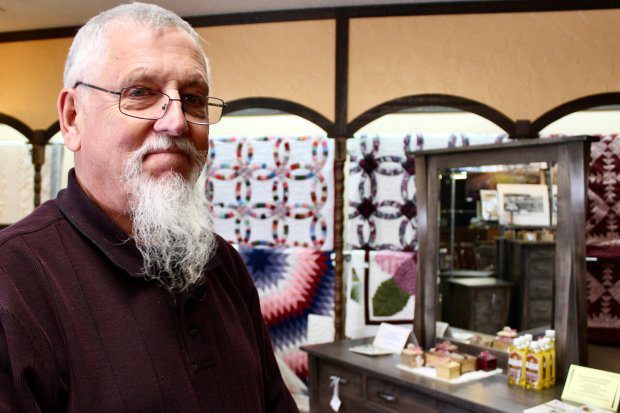
Seventy miles east of Springfield, there is an Amish settlement of 4,500 people, making it the eighth largest in the country. Arthur, a village with 2,231 residents, is where I stopped for a springtime introduction and overnight stay.
Meals at Amish farms are arranged for groups, but as a solo traveler, I wasn’t able to join because there were no group reservations for me to join. So, I indulged at the buffet at Amish-owned Yoder’s Kitchen, enjoying chicken and handmade noodles, casseroles, and pot pies.
It’s easy to explore the area using self-guided audio tours for narration. This is one way to discover fourth-generation Green Meadow Farms, which offers buggy rides, and Beachy’s Bulk Foods, which grinds peanut butter to order.
George Fritz, a Skokie native, operates the Wood Loft, which sells Amish-made items. About one-fourth of the store’s furniture and one-third of the quilts are made locally.
“The Amish have been in the area for 100 years but work quietly,” said Fritz, a former Amish cabinetmaker’s employee. “Each farm made something separate — the doors, for example.”
The Wood Loft helped solve the problem of 'how can we assist in marketing you when you are unable to market yourself,' Fritz explained.
'You cannot make a decent living doing just one thing,' Ed Coller, the former economic development director of Arthur, said about life in small towns. 'The Amish settled here for the farmland, even though it was swampy and difficult to farm, but they managed to make it work.'
Penn Station Theatre, which opened last year, presents shows that include musicals with Amish themes. The Illinois Amish Heritage Center, open on Saturdays, consists of Amish-built structures and features demonstrations of sheep-shearing, corn-picking, and lumbering.
Even though there are national chain hotels nearby, I chose to stay in a cozy suite in an Amish-built cottage at Martha’s Vineyard, which also included breakfast.
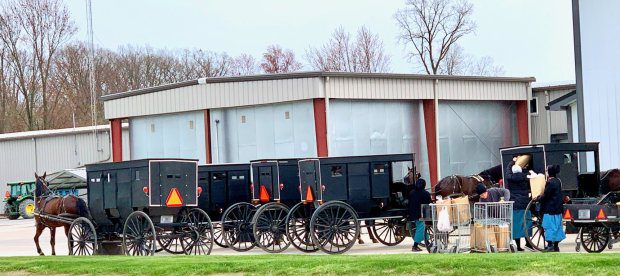
Indiana: showtime in Shipshewana
There was an abundance of Amish-made decorations when I checked into the 155-room Blue Gate Garden Inn in Shipshewana, a town with a population of 841, located about 130 miles east of Chicago. The area is home to the nation’s third-largest Amish community, with 20,000 Amish residents, not including Mennonites, who lead somewhat less restrictive lifestyles.
At the inn is a restaurant, theater and conference center, where I encountered quilters on a six-day stitching retreat, organized three times per year by Gay Bomers of Grand Rapids, Michigan.
Regular flea markets attracted visitors to Shipshewana a hundred years ago, and today, buggies fill the parking lots of grocery stores. Much of the downtown area is easily walkable, and gift shops offer locally made products.
My group’s initial dinner away from the inn took place at an Amish farm and was served family-style. At least four farms provide this experience. We ate “poor man’s steak,” which is breaded ground beef patties with mushroom sauce; chicken marinated in Italian dressing; noodles boiled in chicken broth; and sweet corn, preserved from summer. For dessert, we had apple pie and canned peaches.
During the meal, served in a simple shed-like building, we asked questions about Amish life:
How quickly does a horse and buggy travel? About one hour for every 10 miles.
How long are Sunday church services? They run from 9 a.m. to noon.
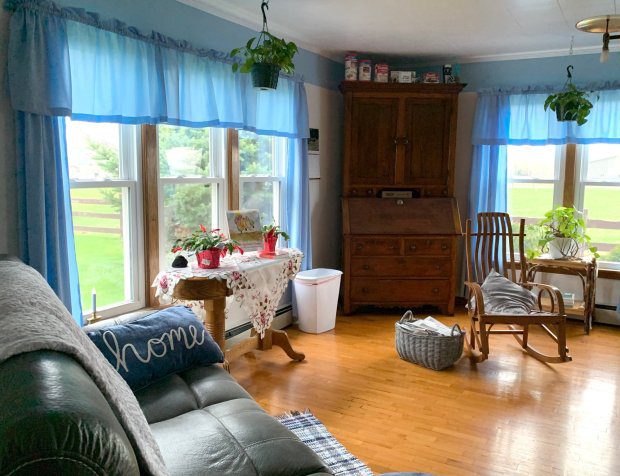
Is it difficult to be Amish? 'We grew up like this and do not think anything of it,' our amused hostess answered with a shrug.
Afterward, we got to see the inside of an Amish home, which was cozy but not extravagant. There were plenty of inspirational messages, in needlepoint and on the walls. The bookcase was filled with well-worn titles with torn and peeling bindings.
Cucumbers, gladiolas, honey, and maple syrup are common products on the area’s 2,100 farms of 10 to 49 acres. Most families also have other work; we visited cottage industries through Back Roads Amish tours, but you can also explore on your own.
Lambright Country Chimes began with a semitrailer truckload of discarded square metal tubing. Now there are thirty-six variations of wind chimes shipped throughout the U.S. and Canada.
Teaberry Wood Products, a Mennonite business, started with wooden puzzles made from sawmill scraps. Now, most of their work consists of handcrafted baskets that look woven.
At Dutch Country Market, they make and dry racks of thin to very wide noodles. The owner and local residents harvest ten different flavors of honey from beehives they maintain.
Plain Foods, a wholesale business, makes jams, butters, mustards, pickles, and salsas under the Mandy's Harvest brand. The business started with a family recipe for apple butter.
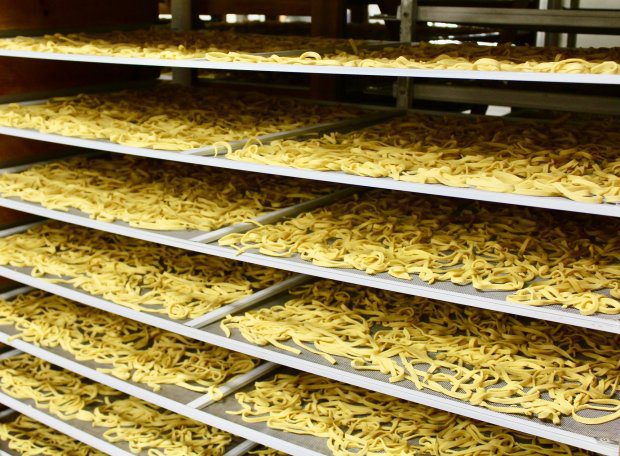
Silver Star Leather, a former harness shop, uses exotic animal skins like elephant, ostrich, and cobra to create purses, belts, gun holders, and other items. The skins come from animals that died naturally and are sourced from as far away as South Africa.
The cinnamon caramel doughnuts at Rise 'n Roll Bakery are very popular. The bakery started by selling treats using age-old recipes from a porch and now has 15 locations in Indiana.
It's a place where people go to bed early. The atmosphere in Shipshewana is usually one of going to bed early.In Shipshewana, there are rarely late-night activities. Blue Gate Theatre puts on family-friendly, Amish-themed shows like “Half-Stitched: The Musical” and “When Calls the Heart.” The new Blue Gate Performing Arts Center can accommodate larger audiences for touring acts.
When shopping at Amish farms, there are a few basic rules to follow. Stop only if you are serious about making a purchase, use cash instead of credit cards, ask before taking photos, and avoid visiting on Sundays.
Mary Bergin is a freelance writer.





